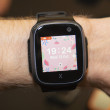Review: Blu Life One X2
Oct 21, 2016, 1:00 PM by Eric M. Zeman
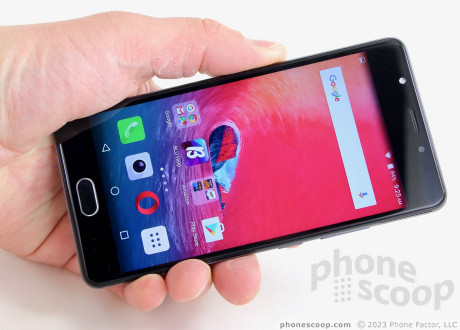
Blu's latest Android smartphone is the inexpensive Life One X2. It offers a premium metal-and-glass appearance paired with mid-range specs and performance. This unlocked handset could be ideal for Cricket or MetroPCS customers. Here is Phonescoop's in-depth review.
Hardware
Is It Your Type?
The Blu Life One X2 is a low-cost Android handset that aims high with a stylish design and a few premium features, like a fingerprint reader and 16-megapixel camera. Blu sells the phone online unlocked. It has network support for T-Mobile, MetroPCS, Cricket, and AT&T.
Body
The One X2 looks better than it feels. Blu adopted the popular metal-and-glass design approach with this phone in order to give it a premium appearance. The One X2 almost pulls it off, but it's too easy to see past the thin veneer.
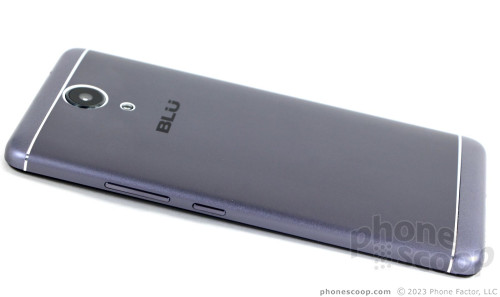
Black glass forms the front surface of the One X2 and it's curved very slightly along the edges to help smooth out how it feels. The rear of the phone is made from a metal shell that wraps around and forms the side edges. It's got a nice gray color to it with a matte finish that I rather like. Chrome bands run from side-to-side across the top and bottom edges. These bands separate the metal portion of the rear shell from plastic ends. The plastic is gray, but not the same gray as the metal. The mismatched grays drive me nuts. Other chrome accents help break up the solid black and gray surfaces. Overall, the One X2 has a conservative, upscale design.
The 5.2-inch screen helped Blu keep the One X2's footprint in check. It's not huge, but it's not small, either. I found it easy to hold and use with one hand. I wish it were thinner and a little lighter. The metal back plate definitely adds some heft to the phone. If you're looking for a size comparison, it's nearly identical to the HTC 10. People with the smallest hands may not be comfortable using the One X2, but my guess is most will have no trouble with it. The phone will fit in most pockets without issue.
I'm not sold on the quality for several reasons. Though it's technically made of metal, the One X2's rear panel still feels a bit cheap to me. The metal is the most non-metal-feeling metal I've felt. The chrome bands, which are indented a bit, have sharp edges to them and the plastic ends just feel gross. Despite my misgivings about the materials, the phone does look and feel like it is put together well. Nothing is loose or wiggly, and all the seams are tight.
The One X2's face is black. I appreciate that the display is indistinguishable from the surrounding bezels when off. The user-facing LED flash stands out starkly above the display. The chrome-rimmed fingerprint sensor below the display is easy to spot. The sensor doubles as a home button. Travel and feedback are just okay. You can also set the button to act like a trackpad. This feature is turned off by default. There are no other buttons on the front, as the One X2 uses software controls for interacting with the user interface.
The side edges of the X2 have a pleasing rounded profile, but an uncomfortably sharp lip where the rear shell joins with the glass front. The screen lock key and volume toggle are on the right. These buttons have good profiles, making them a cinch to find without looking. Travel and feedback is good. The 3.5mm headphone jack is on top and the microUSB port is on the bottom.
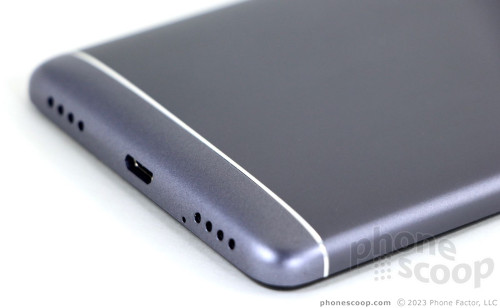
Blu carved out a nice shape for the rear panel. The phone is at its thickest along the central vertical axis and it tapers just a bit towards the sides. From a distance, the chrome bands and gray metal look nice. As noted earlier, the plastic end caps of the rear shell don't match the gray color of the metal, and the chrome bands look cheap. There's no other way to say it.
The entire rear panel lifts off, providing access to the SIM and memory card slots underneath. Clasps hold the panel on pretty tightly and it takes some effort to pry loose. Interestingly, the One X2 supports two SIM cards, which means you can have two accounts/numbers associated with the phone if you want. This feature is rare for phones sold in the U.S. Both SIM slots accept micro (3FF) SIM cards. If you're looking for a removable battery, I have some bad news: the One X2's power cell is concealed within the phone's chassis and cannot be swapped.
From an arm's length the Blu Life One X2 looks snazzy, but up close it looks more snoozy. It's an acceptable piece of hardware for this price point, but I've seen better.
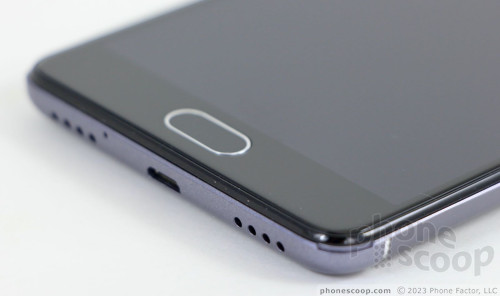
Screen
The One X2's screen measures 5.2 inches across the diagonal and includes full HD resolution. I was pleased with the sharpness and clarity of text, icons, and so on. The LCD panel puts out plenty of light for indoor use, but I was not as happy with outdoor viewability. You need to be sure to crank up the brightness if you want to take pictures outside. Viewing angles are pretty good; I didn't see much brightness drop off nor color shift when tilting the phone around. It's more than adequate for a $200 phone.
Signal
Blu sells the One X2 unlocked and it supports LTE Bands 2, 4, 7, 12, and 17, which is good enough for decent coverage with AT&T, T-Mobile, and their prepaid brands in the U.S. I tested the One X2 on AT&T's network in and around New York City. The phone did a decent job, but I'd rate it below average when compared to other unlocked phones I've evaluated in recent months. Phone calls connected on the first attempt and the One X2 didn't miss any calls. It did drop a few calls on the highway where other phones had no problem. Data speeds were not overly impressive. The One X2 managed to keep me up-to-date on email and other social network feeds without trouble, but streaming media content via LTE was inconsistent.
Sound
The One X2 is passable for making phone calls, but just barely. The earpiece delivers just enough volume for use in and around your home or office, but it's very hard to hear calls in a moving car or on city streets. You'll need to keep the volume set up all the way at all times. Voice clarity ranges from good to bad, with distortion causing the most trouble. I'd say most calls leaned toward bad rather than good. People I spoke to through the One X2 said I sounded quiet and far away.
The speakerphone is pretty darned loud, and able to push out a lot of sound without distortion. That's a good thing. You may get more mileage taking calls via the speaker rather than the earpiece. I had no trouble hearing speakerphone calls at home, in the car, or walking around New York City. Music, ringers, and alerts can all be set to hella-loud volumes. The vibrate alert is pretty good, too.
Battery
A 3,000 mAh battery fills the inside of the One X2 and it helps push the phone through a day with ease. The phone often still had 30% capacity left at the end of the day. Not once did I find myself in jeopardy before bedtime. As I usually do, I used the One X2 to scroll through Twitter and Instagram, listen to music, watch videos, search Google Maps, and much more. I kept all the radios on and the brightness at about 50%. This type of mixed use didn't challenge the battery at all.
The best news, perhaps, is that the One X2 supports rapid charging via Quick Charge 3.0. Plug the phone in for just 30 minutes and you'll net a 70% charge. The phone includes a fast charger in the box.
Bluetooth, GPS, NFC, WiFi
The One X2's Bluetooth radio was a hair fussy. It took longer than usual to find and pair with other devices and was prone to disconnecting from accessories from time to time. It managed to hold onto my car's hands-free system, but had trouble with a pair of Bluetooth headphones. Calls via the hands-free connection were barely tolerable; you're better off just using the built-in speakerphone. Music sounded below average through even the best Bluetooth gear.
The phone's GPS radio was much more consistent. It was able to find me in about 10 seconds and resolved my location to within about 25 feet. It didn't exhibit any lag or speed issues when used as a real-time navigation device.
The One X2 doesn't have NFC. The WiFi worked well.
Software
Lock Screen
The One X2 drops the goofy lock screen that we saw on some of Blu's other handsets this year for a more traditional Android experience.
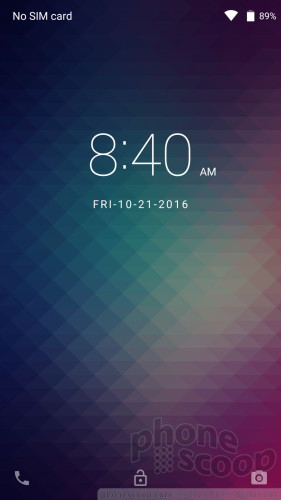
A quick press of the screen lock button will wake the screen, which places a digital clock in the middle of the display with notifications lined up underneath. As on most Android phones, you can control how much detail is shared by notifications. Dismissing them requires but a swipe. The lock screen allows you to access the full notification shade, as well as the Quick Settings tools. There are shortcuts to the phone and the camera apps in the lower corners of the lock screen.
Blu didn't include any fancy gestures or motions for waking the phone up. Security options run the typical, which means PIN, pattern, password are available. The fingerprint sensor is a cinch to train, but it doesn't work as fast as I'd like it to. I'd say 50% of the time I attempted to use the sensor is misread my print and asked me to reposition my finger. That gets really old really quick.
Blu did add some neat fingerprint-based features. For example, you can hide files behind your fingerprint, or assign custom actions for your different fingerprints. This lets you choose to have the phone unlock with your thumb, but call your mom with your index finger. Neat.
Home Screens
The One X2 runs Android 6.0 Marshmallow, but the stock user interface is covered up by Blu's skin. Perhaps the most noticeable difference is that Blu's take on the Android home screen drops the traditional app drawer.
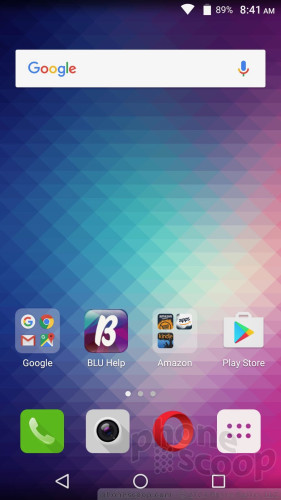
The phone has three home panels active out of the box. The left-most panel is the "home" screen and is where you'll see a Google search bar, weather widget, and some core apps. The following two panels are filled with preloaded apps. There is no app drawer, so all of your apps are on a home screen, similar to iOS. However, the One X2 adds a secondary app menu screen that lines them up alphabetically and allows you to search through them. It's not a traditional app drawer, per se, but you might say it follows in that vein. Users can rearrange the home screen panels however they wish. The home screens support folders, widgets, animated screen transitions, and so on.
The One X2 has a traditional Android Quick Setting panel that slides down from the top. The toggles adopt Blu's custom icon shapes, but that doesn't impact usability.
The Settings tools are standard Android. One thing worth pointing out: because the phone supports two SIM cards, you can customize how incoming calls alert the device. For example, you can set one ringtone for your personal number and a second ringtone for your work number.
The phone is powered by a 1.4 GHz Snapdragon 430 processor. It comes with either 2 GB or 4 GB of RAM depending on which model you select. I strongly suggest you pick the 4 GB model. The 430 delivers more than enough power to run the One X2 smoothly. Not once did the phone feel slow or underpowered. I tested the 4 GB modern, which likely helped.
Camera
Making use of the lock screen shortcut is by far the quickest way to launch the camera app. It opens quickly enough.
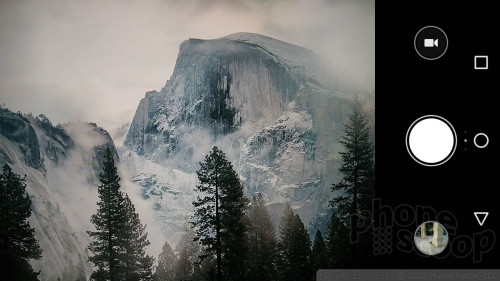
The controls are arranged in a fairly typical manner with the shutter buttons on the right side of the screen. Swipe the viewfinder up to access all the settings and swipe the viewfinder down to access the shooting modes. Swipe either left or right to switch to the selfie camera.
The One X2 has 8 different shooting modes: normal, professional, HDR, panorama, night, face beauty, sports, and smart frame. Many of these modes are self explanatory and work as you expect them to.
The professional mode is mostly robust and allows users to adjust focus, exposure (brightness), ISO (speed), white balance, sharpness, and saturation. You can't set your own shutter speed, which means no creative night shots. The smart frame tool is kind of fun. It puts a picture you've taken into a frame, such as a mirror, laptop screen, TV screen, or billboard advertisement.
Most people will be happy to use the normal shooting mode, which is the default setting and easiest to manage.
I like that the settings tool is an array of icons rather than a boring list. It's quite easy to take control over the flash or geotagging, change the resolution for photos and videos, and so on.
The app is a little on the slow side, particularly when it comes time to focus and capture pictures. Low light really puzzles the camera's focus system, which delays the picture-capturing process even more. I wish the camera were quicker.
Photos
The One X2 has a 16-megapixel sensor with an aperture of f/2.4. It's not the best camera in the market, but it holds its own for this class of device. Images are generally sharp and white balance is mostly on-point. Exposure is inconsistent, and I noticed a fair amount of grain in photos taken in low light. The flash doesn't help when taking photos in darker spaces, other than to give everything that "flash'd" look. You can compensate for some of the camera's problems with a little know-how in manual mode.
The selfie camera has an 8-megapixel sensor and its own flash. Shots I took with it outdoors were a bit of a mess, with soft focus, poor exposure, and odd white balance. It only gets worse when used indoors. Definitely use the selfie flash if you can, because it helps a little bit.
As for the 1080p HD video I shot, the One X2 produced usable results as long as there is plenty of light. Chances of you scoring good footage of your kid's school talent show in a darkened theater is pretty low, but their afternoon soccer game might look decent.
I wouldn't use the One X2 as my primary imaging device, but it suffices for simpler, spur-of-the-moment stuff.
Blu Apps
For a non-carrier phone, this thing sure has a lot of bloatware on board. You've got all the Google apps, a handful of Amazon apps, a couple of Blu apps, and plenty of generic utilities. You can delete most of the unwanted junk.
Wrap-Up
The Blu Life One X2 is a decent phone, but it's not the best phone available for the money. At $200 (or even at $150 if you buy it from Amazon with lock screen ads), there are much better options from Cricket and MetroPCS.
The Blu's design is like a movie set: it looks good on screen, but you can tell it's not genuine when up close. The materials fall short of my expectations though I can't complain about build quality. The screen is decent, but voice and data performance are below average. Battery life is one bright spot. Many would probably prefer a removable battery to the dual SIM card slots.
The One X2 delivers a relatively standard Android experience. That's good news. The camera app itself is pretty good, but the resulting images aren't.
Looking at what Cricket and Metro have on offer right now, it's hard to tell anyone to get the Blu Life One X2. At Cricket, for example, you can get the excellent LG G Stylo 2 for $150. What's more, Metro is offering the impressive ZTE Max Pro for just $99. I would only recommend the Blu Life One X2 to someone who specifically needs an unlocked phone.

Comments
No messages


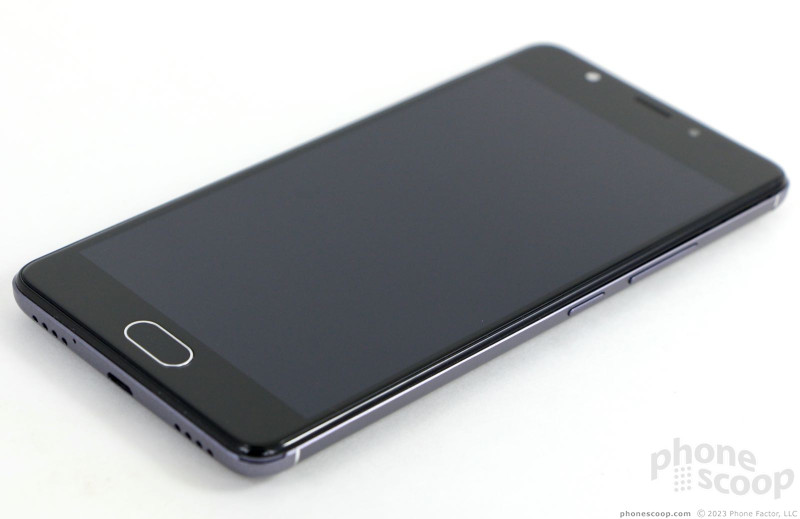















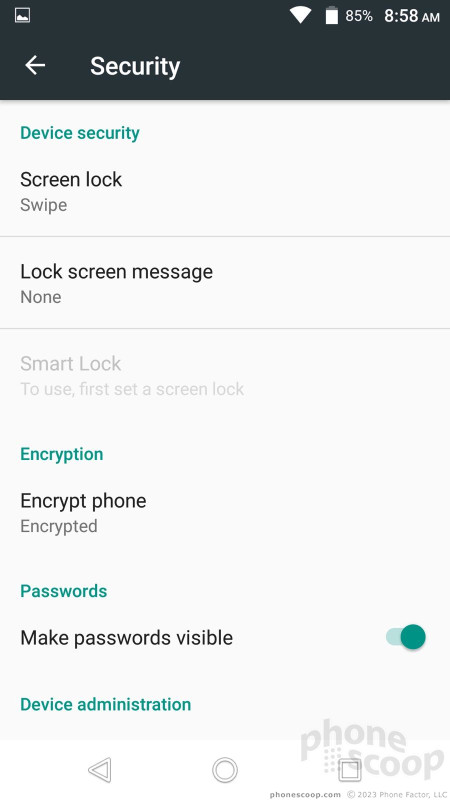





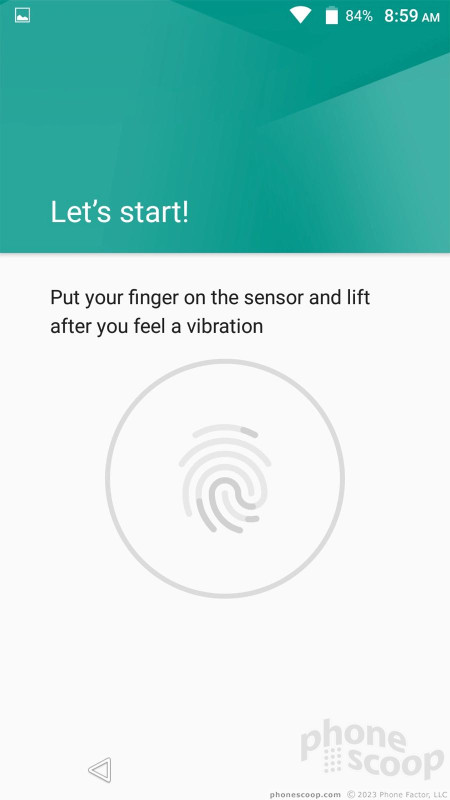





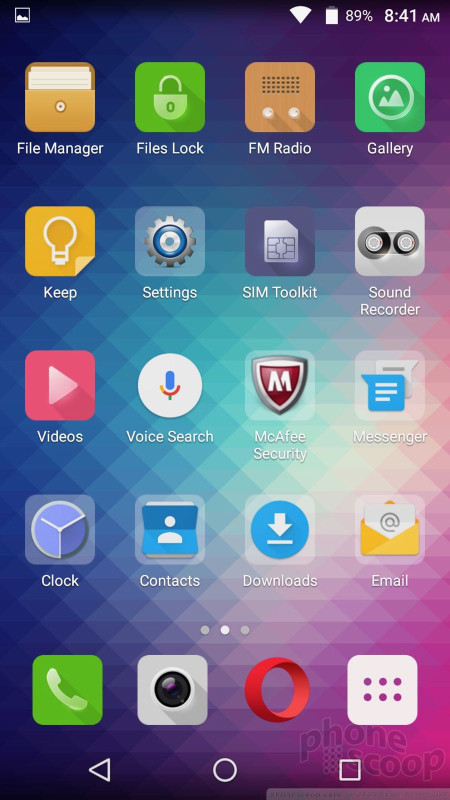









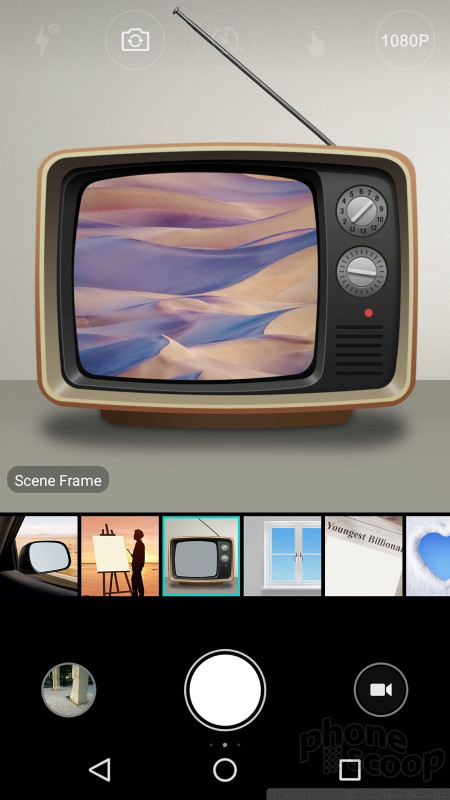





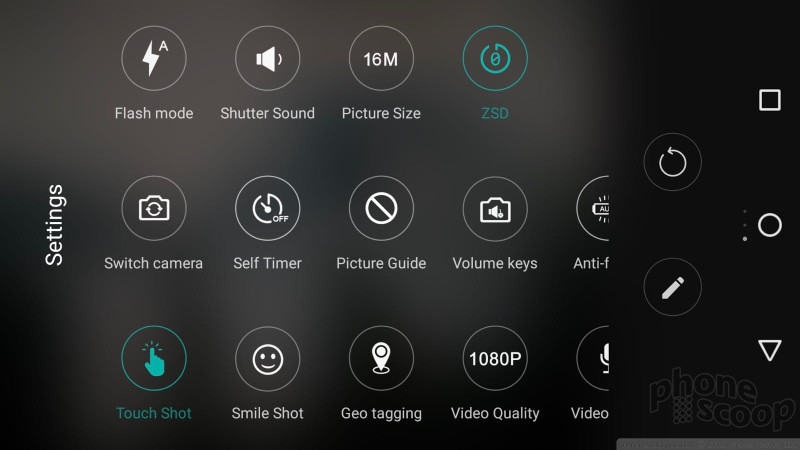























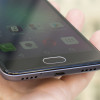 Hands On with Blu's Life One X2
Hands On with Blu's Life One X2
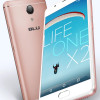 Blu Shows Off the Life One X2
Blu Shows Off the Life One X2
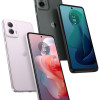 Motorola Brings More Affordable 5G Phones to its 2024 Lineup
Motorola Brings More Affordable 5G Phones to its 2024 Lineup
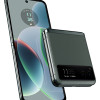 Motorola's new razr Foldable is Just $600
Motorola's new razr Foldable is Just $600
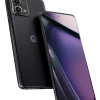 2023's moto g stylus 5G is Smaller
2023's moto g stylus 5G is Smaller
 BLU Life One X2
BLU Life One X2



